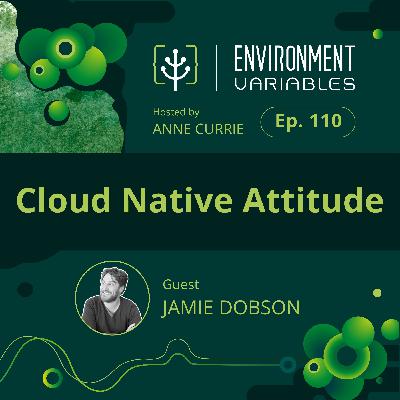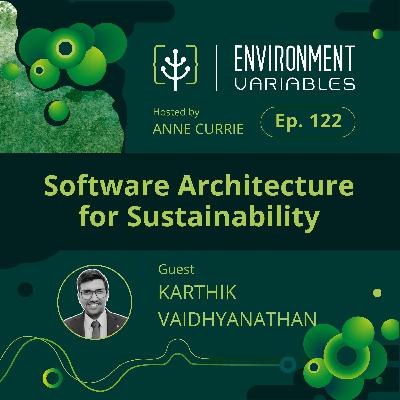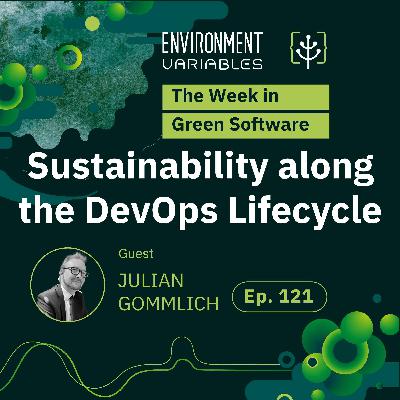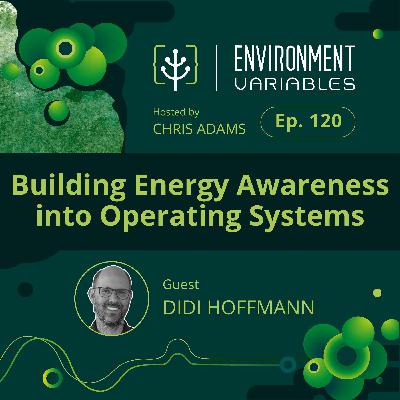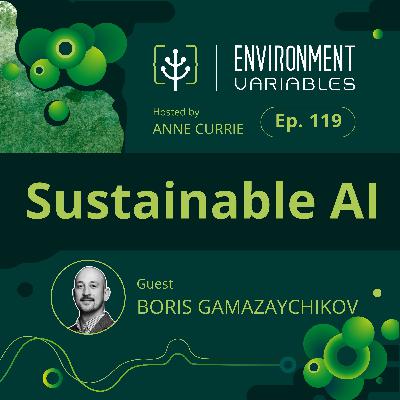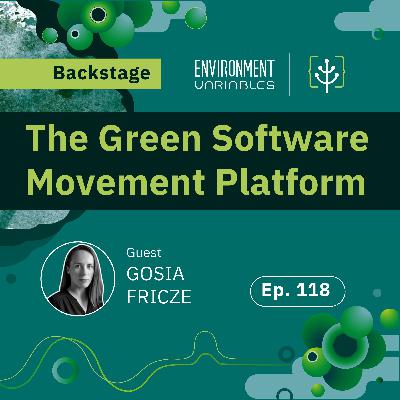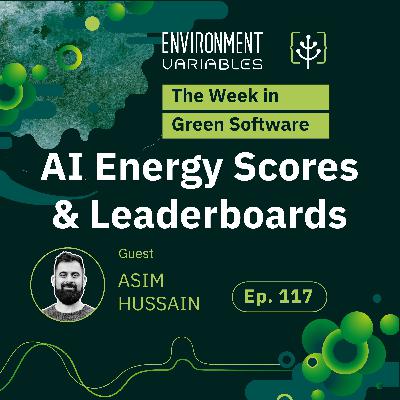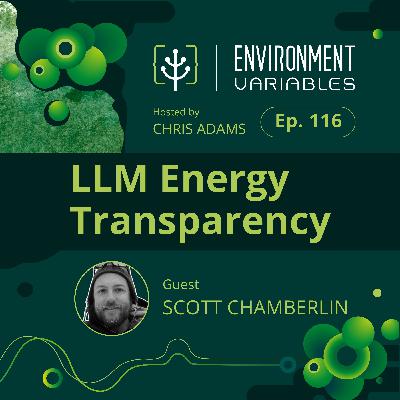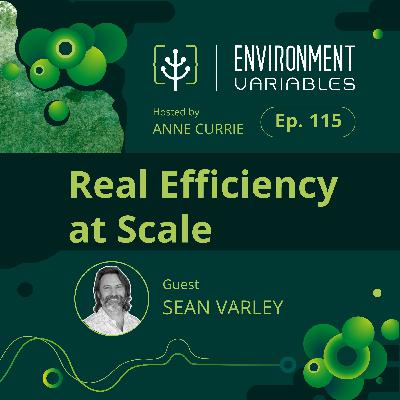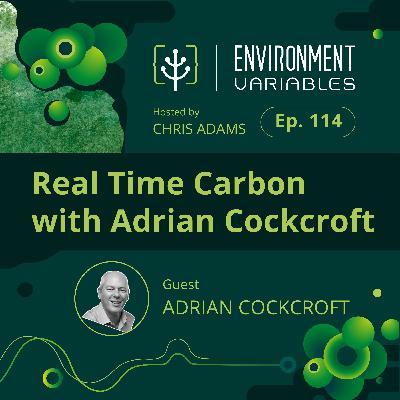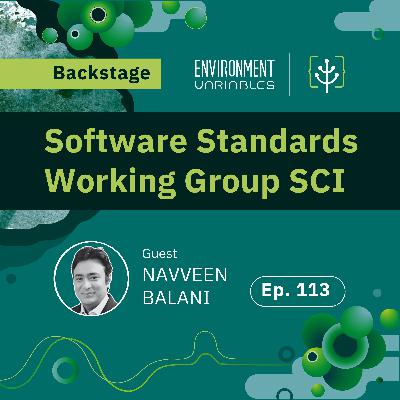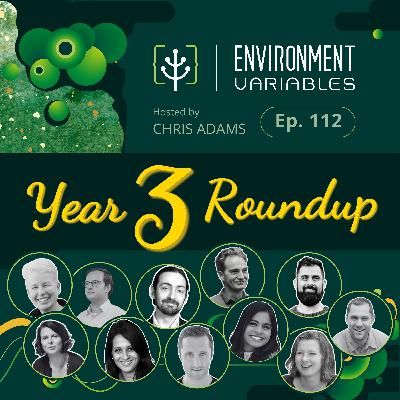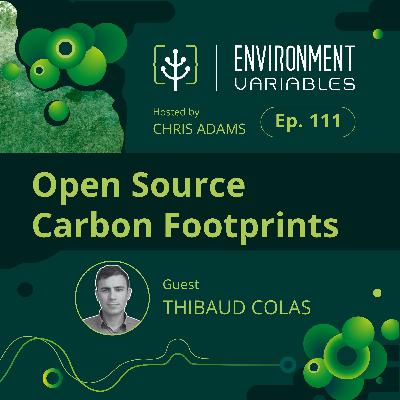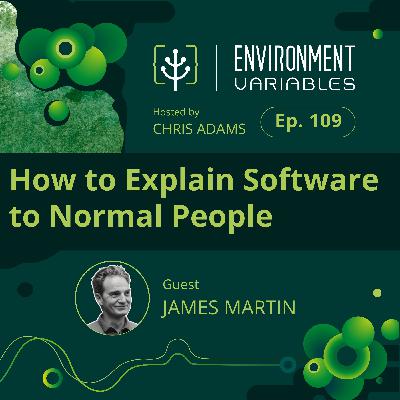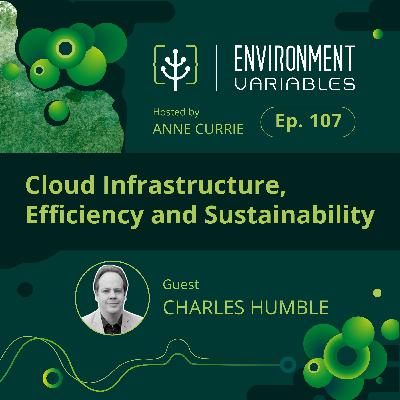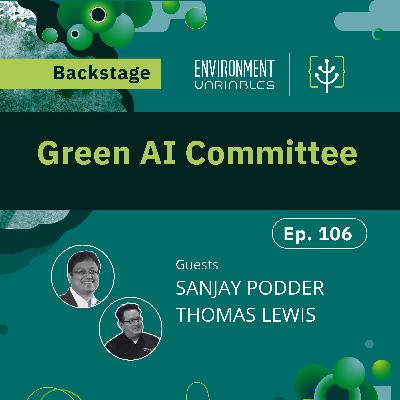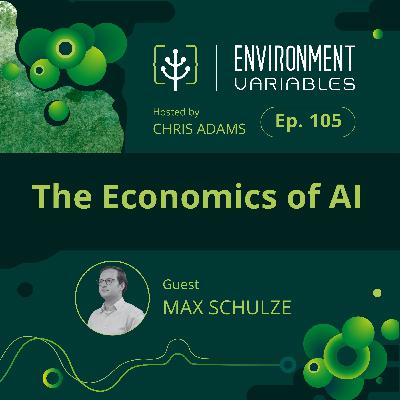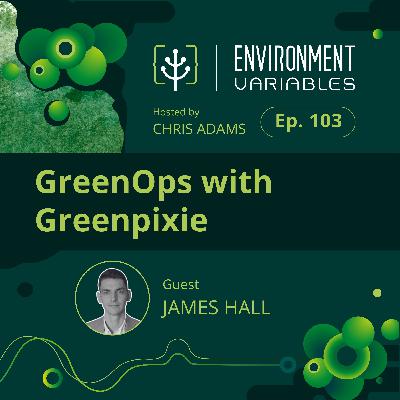Cloud Native Attitude
Update: 2025-06-05
Description
Environment Variables host Anne Currie welcomes Jamie Dobson, co-founder of Container Solutions and author of the upcoming book Visionaries, Rebels and Machines. Together, they explore the history and future of cloud computing through the lens of sustainability, efficiency, and resilience. Drawing on insights from their past work, including The Cloud Native Attitude and Building Green Software, they discuss how cloud-native principles can support the transition to renewable energy, the potential and pitfalls of AI, and why behavioral change, regulation, and smart incentives are key to a greener digital future.
Learn more about our people:
Find out more about the GSF:
Resources:
- The Cloud Native Attitude: Amazon.co.uk | Anne Currie, Jamie Dobson [01:21 ]
- Building Green Software: O'Riley | Anne Currie, Sarah Hsu, Sara Bergman [01:38 ]
- Visionaries, Rebels and Machines: Amazon.com | Jamie Dobson [03:28 ]
- Jevons paradox - Wikipedia [11:41 ]
If you enjoyed this episode then please either:
- Follow, rate, and review on Apple Podcasts
- Follow and rate on Spotify
- Watch our videos on The Green Software Foundation YouTube Channel!
Connect with us on Twitter, Github and LinkedIn!
TRANSCRIPT BELOW:
Jamie Dobson: We're loaded up all these data centers, we're increasing data sets, but ultimately no matter how much compute and data you throw at an artificial neural network, I think it would never fully replace what a human does.
TRANSCRIPT BELOW:
Jamie Dobson: We're loaded up all these data centers, we're increasing data sets, but ultimately no matter how much compute and data you throw at an artificial neural network, I think it would never fully replace what a human does.
Chris Adams: Hello, and welcome to Environment Variables, brought to you by the Green Software Foundation. In each episode, we discuss the latest news and events surrounding green software. On our show, you can expect candid conversations with top experts in their field who have a passion for how to reduce the greenhouse gas emissions of software.
I'm your host, Chris Adams.
Anne Currie: Hello and welcome to Environment Variables Podcast, where we give you the latest news and updates from the world of sustainable software development. So this week I am your guest host Anne Currie. And you don't have the dulcet tones of Chris Adams, you're left with me this week. So we're gonna do something a little bit different this week.
I have got an old friend and colleague and co-author, Jamie Dobson in to talk about it. So Jamie is the co-founder and CEO of a company called Container Solutions. And he's the author of the soon to be released book; Visionaries, Rebels and Machines, which I've read, and that's what we'll be talking a lot about.
And he's also the, one of my co-authors of a book I wrote nearly 10 years ago called the Cloud Native Attitude, which is about the principles of moving into the cloud. And there's an awful lot in there about sustainability with that, there's a lot we need to talk about around that. And it was actually for me, the precursor to the book that I wrote which came out with O'Reilly last year, with co-authors Sarah Hsu and Sara Bergman, Building Green Software, which as I always say every week,
everybody listening to this podcast should read because you'll find it very interesting and it is couldn't be more germane. So today we're gonna talk about those three books, really, and the thematic links between them all, which are really about resource efficiency, building at scale without it costing a ridiculous amount of money or using a ridiculous amount of resources.
And also resilience, which is something we're gonna really have to focus on when it comes to running on renewable power. So, let me let Jamie introduce himself and maybe tell us a little bit about his new book, Visionaries, Rebels, I can never remember whether it's Rebels, visionaries and Machines.
It's Visionaries, Rebels and Machines. Go for it, Jamie.
Jamie Dobson: Visionaries, Rebels and Machines. That's correct. Hello Anne. Thanks for having me on the podcast. And hello to all your listeners. who tune in every week? Yeah. So my name is Jamie. I am indeed the co-founder of a company called Container Solutions. But it's no longer, I'm no longer, I should say, the chief exec,
'cause I handed that role over about a year ago, which is probably why, or, you know, it explains why I could find the time to finish writing this damn book. So Container Solutions is a company that specializes in cloud transformation, helping customers, you know, get off whatever infrastructure they're running on now and get onto, you know, efficient cloud infrastructure.
And if we do that right, then it's kind of green and sustainable infrastructure, but it's hard to get right, which I'm sure we're gonna discuss today.
Anne Currie: Indeed. Yes. Yes. So, so you've got a book that's about to come out, which I have read, but it's not yet available in, the, in the stores, but it will be available on, in all good book bookstores, Visionaries, Rebels and Machines. And I, the reason why I asked you to come on is because I think there are a lot of ideas in there that would, that we need to be talking about and thinking about.
So, so tell us a little bit about Visionaries, Rebels and Machines, and then I'll tell you why I think it's interesting.
Jamie Dobson: Absolutely. Yeah. So, so Visionaries, Rebels and Machines, we have to start at a point in time. And that point in time is about four or five years ago. And I was asked the question, "what's the cloud?" It was, the person asking me, it was a junior colleague, new to Container Solutions. And, you know, I started to answer, or at least I opened my mouth,
and of course I can answer that question, but I can't answer it necessarily succinctly. So I was asked the question, I think probably around about June, so maybe about five years ago today actually. And over the summer period I was thinking, "God, how do you answer that question? What is the cloud?" And so I started to creep backwards in time.
Well, the cloud is, you know, there's a bunch of computers in a warehouse somewhere. But what's a computer? And then once I asked that question. Well, computers are things made up of transistor. Well, what's a transistor? And what I came to the conclusion over the summer, was the following:
The cloud can only really be understood in its own historical context. And so interestingly, once we got to the point of, you know, answering the question, what is the cloud? The arrow was already flying. You know, there was a, an arrow was shot round about the late Victorian time at Thomas Edison's Menlo Park facility in New Jersey, and that arrow flew all the way through the last century through the web, through cloud computing, and it continues to fly with the rise of artificial intelligence. And so the last part of the book is, okay, now we know what the cloud is and what it does, where might it take us next in regards to artificial neural networks and all of that stuff? So that was the book. The Visionaries and the Rebels of the people who built teams, built teams that were innovative. All of them had psychological safety even though the, that concept wasn't known at the time. And so, these historical figures are not just ancient history, like not just Thomas Edison, but also the Jeff Bezos's of the world, the Reed Hastings's, and the modern figures of cloud computing. The visionaries and the rebels can teach the rest of us what to do with our machines, including how to make 'em sustainable.
Anne Currie: And that is the interesting thing there. So I enjoyed the book. It's, it is quite, it is a readable romp. And I very much connect with your, with your initial motivation of trying to explain something that sounds simple, but actually you realize, oh gosh, I'm gonna have to write an entire book to even get my own head around this rather than, you know, 'cause that was true for, well, when we wrote, it's actually a, Cloud Nati
Comments
In Channel

